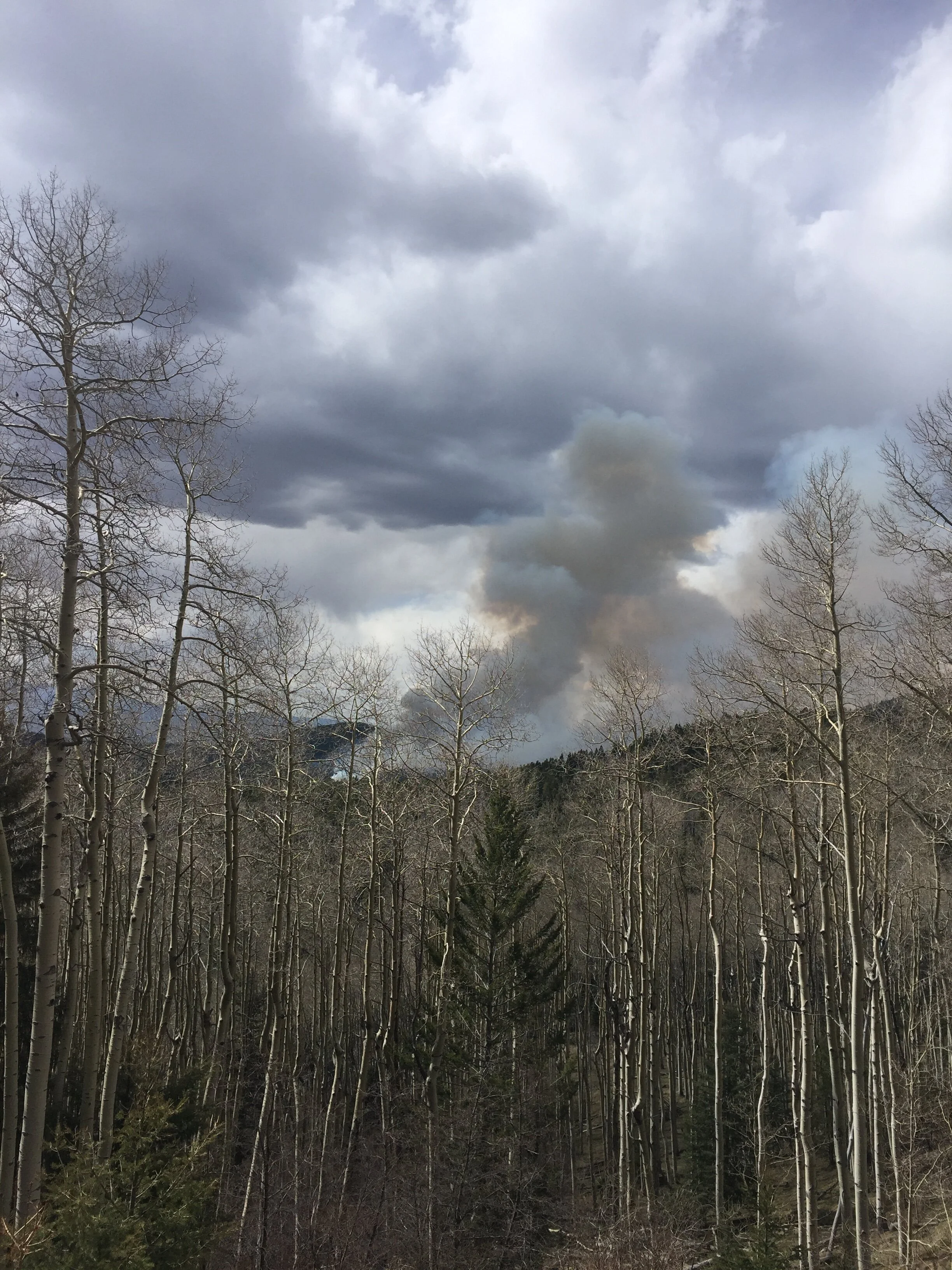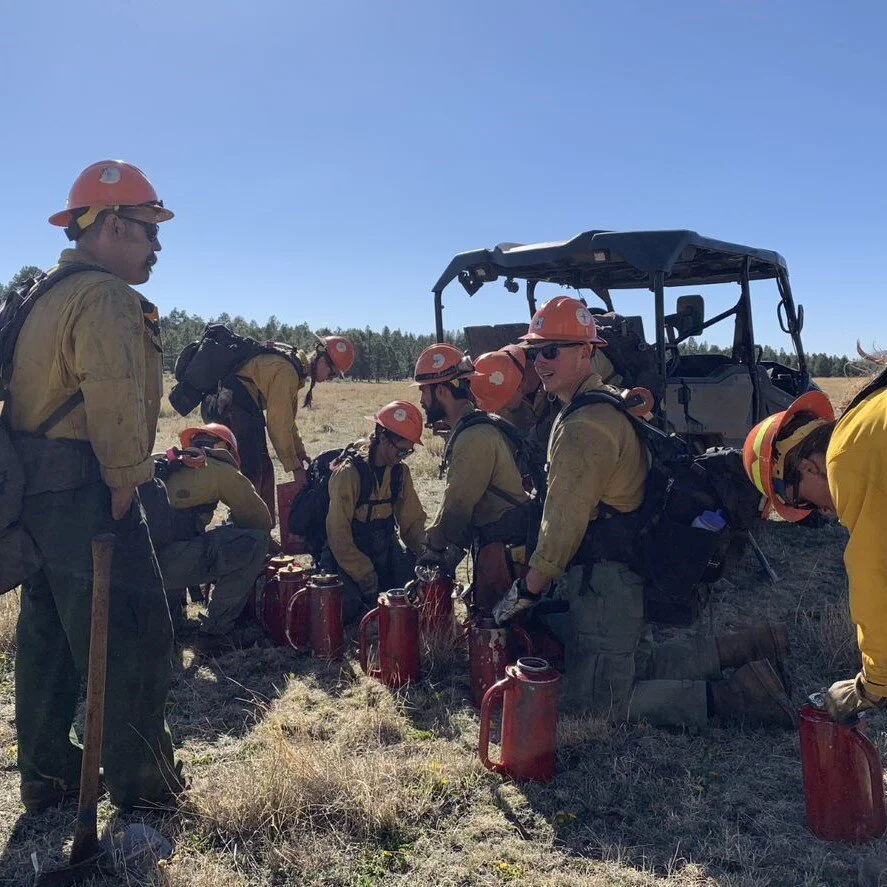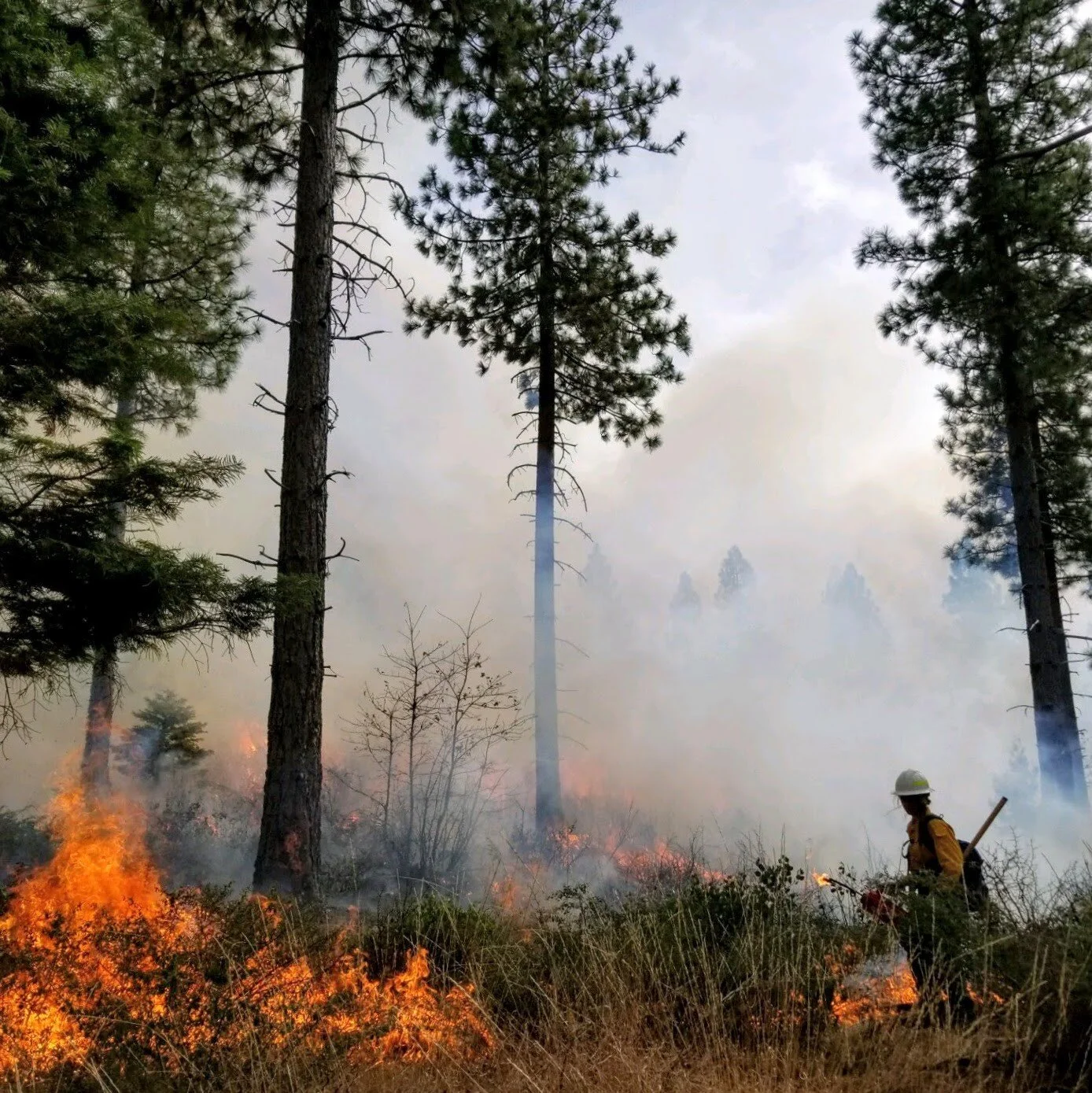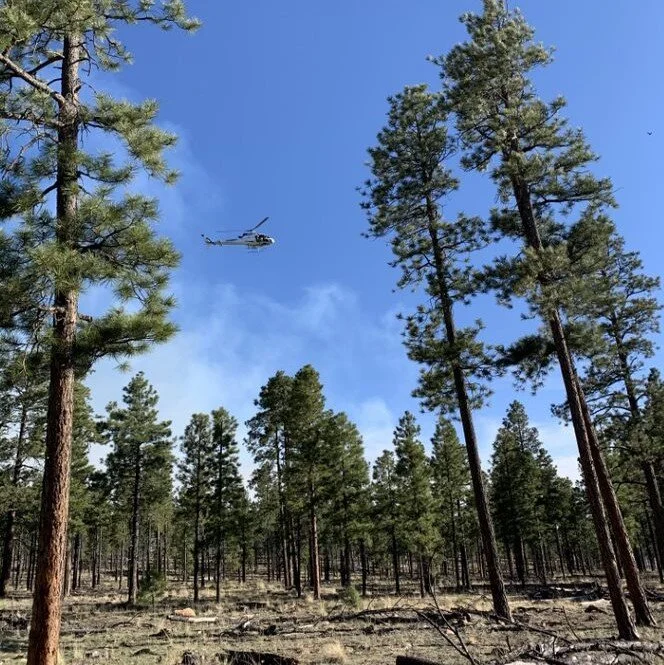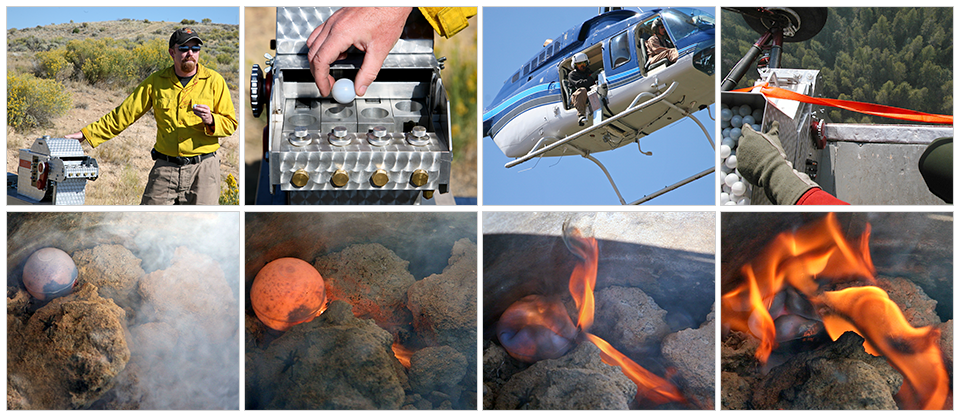Prescribed burning
“Prescribed fires, also known as prescribed burns or controlled burns, refer to the controlled application of fire by a team of fire experts under specified weather conditions to restore health to ecosystems that depend on fire” (U.S. Forest Service). This application is one type of restoration treatment available to federal, state, and private land managers. Prescribed fires are only lit under certain parameters (weather, moisture in the vegetation and air, and potential smoke impacts are all considered) and in areas which have been analyzed for their effects (typically NEPA or CEQA analysis which studies the potential impacts on all natural resources). The lead agency must also develop and follow a burn plan, which requires fuel sampling and fire behavior modeling, and a fire management plan prior to ignitions. Fire personnel apply these treatments using ground ignition (e.g. drip torches or flare guns) or aerial ignition (e.g. ping-pong ball system or helitorch).
What are the impacts?
All potential impacts on public health, recreation, vegetation, wildlife, soil health, sensitive plant species, water quality, aquatic life, and archaeology are considered before determining that it is safe to light a prescribed fire. In addition, the effects of treatments applied by land management agencies must not create conditions which exceed the strict limits on federally- and state-regulated levels of contaminants. A 2018 study out of the New Mexico Technical Institute of Mining and Technology (N.M. Tech) analyzed the effects of a prescribed burn conducted in the Upper Santa Fe Watershed, just above McClure Reservoir, on water quality parameters such as temperature, pH, dissolved oxygen, organic carbon, and other metals and ions. Researchers found that the prescribed burn did not have any immediate or long-lasting impact on metals and ions found in the watershed surface water. They also found that while daily fluctuations in water temperature and dissolved oxygen were temporarily disrupted, these changes only lasted for one night following the prescribed burn before returning to baseline conditions. Total organic carbon levels remained elevated for 5 days following the prescribed burn as a result of ash being transported in surface water runoff. The authors concluded that prescribed burns in the Santa Fe Municipal Watershed’s hydrological system do have some minor water quality effects, but their effect is less than that of large natural stormflow events; overall, the prescribed burn did not yield detrimental water quality results.
A study produced by the Joint Fire Science Program in 2018 investigated the impact of forest fire, wild and prescribed, on water quality and the runoff of Dissolved Organic Carbon (DOC) in watershed surface water. DOC levels are of concern to municipal water managers due to the byproducts they can produce during the drinking water treatment process. Results of the study “showed that [moderate- to high-severity] wildfire can deteriorate water quality in particular on sediment loads even from small-scale wildfire within a larger watershed” while the practice of prescribed burning “showed up to 40-50% reductions in DOC” levels, effectively improving water quality and treatability.
What about aerial ignitions?
The main ingredient in DAIDs, or ‘ping pong balls’, is ethyl glycol, a benign reactive chemical; DAIDs contain 1% potassium permanganate which acts as a catalyst to ignite the ethyl glycol. Some sources online will emphasize that when these devices burn they produce manganese oxides. In their care for public health and water quality, the City of Santa Fe Water Division has increased its sampling of raw water intake from the Santa Fe River to evaluate levels of contaminants, including manganese. Their data and findings have not shown any contaminants related to aerial ignition devices being utilized in the municipal watershed to have exceeded drinking water standards. The 2018 study cited in the previous section also found no high concentrations of manganese oxides in their water quality sampling despite the use of aerial ignitions in that treatment. Most ‘ping pong balls’ are oxidized in the ignition process, and this chemical reaction ensures that the potentially harmful contaminants are converted to a non-toxic state (a salt).
Potassium permanganate and its cousin sodium permanganate are both used in the treatment of drinking water to oxidize dissolved metals and contaminants into a solid state so that they may be filtered out. Moving forward, New Mexico Environment Department (NMED) is finalizing a Source Water Protection Plan, expected August 2021. “The City of Santa Fe Water System is dedicated to providing a safe, reliable, and resilient water supply to meet the community’s needs. Source waters that are secure both in quality and quantity are essential for a high quality of life and the prosperity of the City and its residents”. This plan puts an emphasis on forest resiliency, drought as it affects water supplies, and the protection of source water quality and vigor. NMED and the City Water Division continue to be committed to and progressive in protecting the the resiliency and vitality of the Santa Fe River, its tributaries, its reservoirs, and the watershed as a whole.

